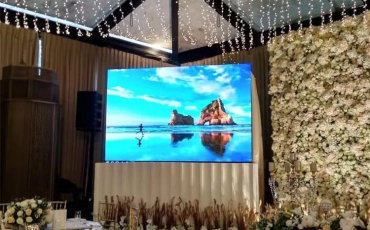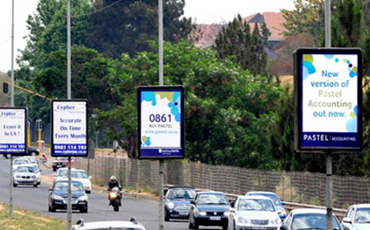Stadium LED displays mainly display live events, game time, scores, sponsor advertisements, etc., and are generally distributed inside and outside the stadium.
It can give the audience a very shocking effect and a different visual experience and enjoyment.
There are many international and domestic sports events nowadays, such as NBA, Olympic Games, European Cup, etc., and LED displays are almost inseparable from sports venues.
LED large-screen display systems have replaced traditional lights and CRT displays and become one of the necessary facilities in modern sports venues.
Today we will learn about the specific requirements for stadium LED displays.

1. Stadium LED screens must have high safety and stability
Safety is paramount in public places, and there are large crowds watching sports competitions and large-scale events. Any fault or error will have a great impact, so stable project quality is an objective requirement of users.
For example, using optical fiber transmission will avoid signal attenuation and will not cause delays in live or broadcast images.
Some protective pads and other measures can also be used to prevent safety accidents.
Dual power supplies can be used. When one power supply fails, the other can be automatically connected without affecting the normal display of the LED large screen.

2. Stadium LED screens need to support diversified input interfaces
The stadium display screen can not only carry out real-time live broadcast by cameras,
but also broadcast TV and satellite TV programs, play VCD, DVD, LD and various self-made video signal programs.
Supports various formats such as PAL, NTSC, etc., and the displayed content can also be various graphic, text, and video information on the computer, etc.
It also needs to be able to connect to the referee system and timing and scoring system. The LED screen can broadcast the game time and score in real time.
3. The stadium LED screen has better protection
For example, it is waterproof and dustproof to prevent moisture and dust from entering the display.
Lightning protection design: Ensure that the display screen can operate safely in lightning weather and avoid lightning damage.
Shockproof design: Considering that the stadium may vibrate due to the movement of athletes, the display screen should have a certain degree of shock resistance to avoid display jitter.
There are also LED screens like football and basketball courts, which may be hit by the ball, so the LED screen needs to have certain anti-collision performance and some anti-collision designs, such as soft cushions.

The flame retardant level, protection level and heat dissipation performance of LED electronic displays in sports venues are relatively good, especially for outdoor sports events, which need to take into account the changeable climate environment.
For example, the beach should pay attention to tide resistance, the plateau area should pay attention to cold resistance, and the desert area needs to consider heat dissipation issues.
4. The display effect of the stadium LED screen is better
The large LED screen in the stadium requires a wider viewing angle and a higher refresh rate to ensure the clarity of the video display.
Especially when introducing athlete information, scores, slow-motion replays, highlights, slow-motion replays, close-ups and other live broadcasts, you must consider whether the audience can see clearly.
5. The point spacing is appropriate
The stadium LED electronic screen should choose the corresponding point spacing according to the viewing distance.
For example, large outdoor stadiums generally choose displays with larger dot pitches. P6 and P8 are the two common dot pitches in outdoor sports venues.
Indoor audiences have higher viewing intensity and closer viewing distance, so P4 and P5 are more suitable for point spacing.
Author: Lisa Yang
FAQs:
1. What are the advantages of stadium LED screens?
Stadium LED screens have the advantages of high brightness, high definition, large visual range, and long-distance visibility, which can meet the needs of sports venues for real-time information transmission and audience experience.
2. How to choose a suitable stadium LED screen?
When choosing a suitable stadium LED screen, you need to consider factors such as screen size, pixel density, brightness, installation location, control system, etc. to ensure that the screen can meet the needs of the stadium.
3. What are the maintenance methods for stadium LED screens?
The maintenance and upkeep of the stadium LED screen includes regular cleaning of the screen surface, inspection and replacement of dead pixels, and timely handling of faults, etc., which can extend the service life of the screen.
4. How to update and control the content of the stadium LED screen?
The content of the stadium LED screen can be transmitted and updated through the network, and can also be remotely controlled and managed through a specialized control system.
5. What considerations are required for the installation of stadium LED screens?
The installation of stadium LED screens needs to consider factors such as venue environment, safety, visibility, power supply, etc. to ensure that the screen can be used normally and the audience can clearly see the content.
6. What factors will affect the display effect and brightness of the stadium LED screen?
The display effect and brightness of the stadium LED screen will be affected by factors such as light, ambient temperature, display content, etc., and the settings need to be adjusted and optimized to maintain the best effect.




